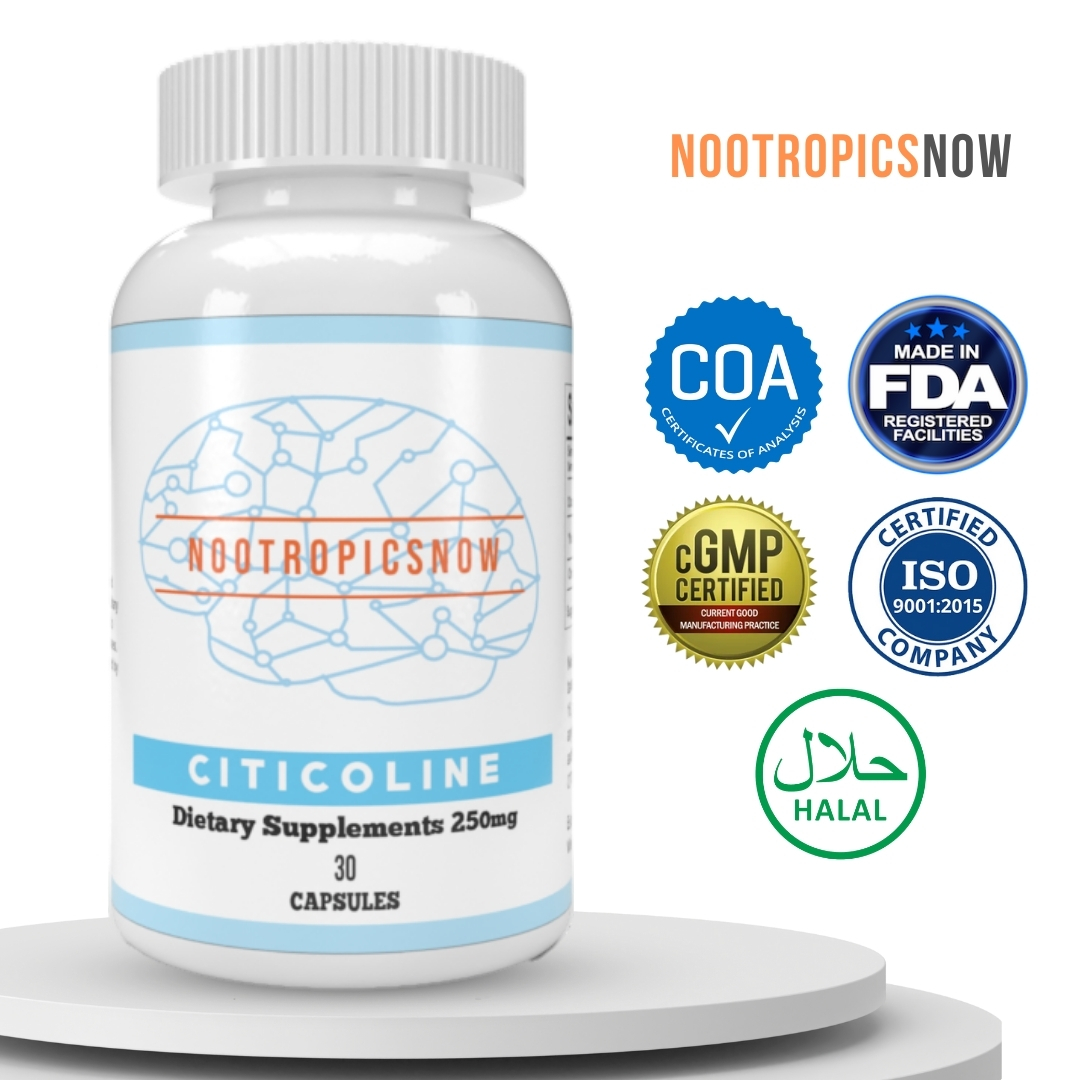Phenypiracetam: Benefits, Dosage, & Effects

Phenylpiracetam: Unlocking Cognitive Potential
Phenylpiracetam, a potent nootropic, has emerged as a popular choice for individuals seeking to enhance their cognitive function, improve focus, and boost overall mental performance. This synthetic compound, also known as fonturacetam, has garnered attention due to its reported ability to enhance learning, memory, and even physical endurance. Let’s delve deeper into phenylpiracetam, exploring its mechanisms of action, benefits, potential side effects, and proper usage.
What is Phenylpiracetam?
Phenylpiracetam is a derivative of piracetam, the original nootropic. However, the addition of a phenyl group significantly amplifies its effects. This phenyl group allows phenylpiracetam to cross the blood-brain barrier more efficiently, resulting in a more pronounced and faster-acting cognitive enhancement. Consequently, phenylpiracetam is estimated to be 30 to 60 times more potent than piracetam. Beyond cognitive benefits, early studies also indicated efficacy with cold tolerance.
How Does Phenylpiracetam Work?
The exact mechanisms of action of phenylpiracetam are still being researched, however, several key processes have been identified. Phenylpiracetam modulates the levels and activity of key neurotransmitters in the brain, including dopamine, norepinephrine, and acetylcholine.
For those interested in supporting their acetylcholine levels, a CDP Choline supplement might be beneficial:

View Product
Key Benefits of Phenylpiracetam
Users report a range of cognitive and physical benefits when taking phenylpiracetam, resulting in a range of potential improvements that boost performance and well-being.
If you’re looking to boost your overall cognitive function, consider a Lion’s Mane supplement:

View Product
Potential Side Effects and Precautions
While generally considered safe when used responsibly, phenylpiracetam can cause side effects in some individuals. The severity and likelihood of side effects vary depending on individual sensitivity, dosage, and frequency of use.
It’s important to note that Phenylpiracetam is banned in many sports due to its performance enhancing qualities.
Dosage and Usage Guidelines
To maximize the benefits of phenylpiracetam and minimize the risk of side effects, it is crucial to follow proper dosage and usage guidelines. The optimal dosage varies depending on individual sensitivity, body weight, and desired effects.
Stacking Phenylpiracetam
Stacking involves combining phenylpiracetam with other nootropics or supplements to enhance its effects or mitigate potential side effects.
Legal Status and Availability
The legal status of phenylpiracetam varies depending on the country. In some countries, such as Russia, phenylpiracetam is a prescription medication used to treat specific medical conditions. In other countries, such as the United States, phenylpiracetam is not regulated as a medication and is available as a research chemical or dietary supplement.
Is Phenylpiracetam Right for You?
Phenylpiracetam can be a valuable tool for improving cognitive function, increasing energy, and enhancing overall mental performance. However, it is crucial to use phenylpiracetam responsibly, following proper dosage and usage guidelines, and consulting with a healthcare professional before use, especially if you have any underlying health conditions or are taking any other medications.
Phenylpiracetam is not a substitute for a healthy lifestyle. It is important to prioritize good sleep, nutrition, and exercise to support overall brain health.
Phenylpiracetam: The Potent Cognitive Enhancer
Phenylpiracetam, a derivative of piracetam, is a nootropic compound known for its stimulating and cognitive-enhancing effects. It distinguishes itself through its unique chemical structure and purported benefits, making it a subject of interest within the nootropics community. This section explores phenylpiracetam in detail, covering its history, benefits, potential side effects, and optimal usage strategies.
History and Development of Phenylpiracetam
Phenylpiracetam was initially synthesized in 1983 by the Russian pharmaceutical company, JSC Valent Farm, as a medication for cosmonauts seeking to improve their cognitive and physical performance during extended space missions. It was specifically created to address the challenges of prolonged isolation, mental stress, and the physical demands of space travel. The addition of a phenyl group to the piracetam molecule aimed to enhance its ability to cross the blood-brain barrier, thereby increasing its potency and effectiveness. Consequently, phenylpiracetam gained popularity in Russia and other Eastern European countries, where it is prescribed for various conditions.
How Phenylpiracetam Works: Mechanism of Action
While the precise mechanism of action is still under investigation, phenylpiracetam is believed to exert its cognitive-enhancing effects through several pathways in the brain. Phenylpiracetam works by increasing the levels of dopamine and norepinephrine in the brain. Dopamine, a neurotransmitter crucial for motivation, reward, and motor control, enhances focus, alertness, and mood regulation. Likewise, norepinephrine elevates alertness, attention, and cognitive processing.
Moreover, phenylpiracetam also modulates the activity of acetylcholine, a neurotransmitter vital for memory and learning. By influencing these neurotransmitter systems, phenylpiracetam can improve cognitive functions such as memory, attention, and overall mental performance. The phenyl group enhances the drug’s lipophilicity, allowing it to cross the blood-brain barrier more efficiently and exert its effects more rapidly.
Benefits of Using Phenylpiracetam
Phenylpiracetam offers a wide array of potential benefits, making it a popular choice among individuals seeking cognitive enhancement and improved physical performance.
Cognitive Enhancement: Users often report enhanced memory, improved focus, and increased mental clarity. Phenylpiracetam can facilitate information processing, making it beneficial for tasks requiring sustained attention and concentration. Many users have found it invaluable when studying for demanding exams.
Mood Improvement: Phenylpiracetam has demonstrated the ability to elevate mood and reduce symptoms of anxiety and depression. By modulating neurotransmitter levels, it can promote a sense of well-being and emotional stability, benefiting those who experience mood fluctuations or stress.
Physical Performance: Athletes and fitness enthusiasts use phenylpiracetam to enhance physical performance and endurance. It can increase energy levels, reduce fatigue, and improve resistance to stress.
Neuroprotective Effects: The drug has shown potential neuroprotective properties. This might protect brain cells from damage and oxidative stress, which could be beneficial for long-term brain health.
Increased Motivation: By increasing dopamine levels in the brain, it significantly boosts motivation and drive. This can be extremely useful for overcoming procrastination and accomplishing tasks that require sustained effort.
Cold Resistance: It was initially developed to help cosmonauts endure extreme conditions, it enhances the body’s resistance to cold. This can improve performance in cold environments and reduce the risk of hypothermia.
Potential Side Effects and Safety Considerations
Despite its benefits, phenylpiracetam is not without potential side effects. Users should be aware of these considerations before starting supplementation. The most common side effects include:
It is important to note that individual responses to phenylpiracetam can vary. Starting with a low dose and gradually increasing it while monitoring for adverse effects is recommended. Moreover, those with pre-existing medical conditions or who are taking other medications should consult a healthcare professional before using phenylpiracetam.
Recommended Dosage and Usage Guidelines
Determining the appropriate dosage of phenylpiracetam depends on individual factors such as body weight, sensitivity, and desired effects. The typical dosage range is between 100-300 mg per day, taken in one or two divided doses. It is advisable to start with a lower dose (e.g., 100 mg) to assess tolerance and gradually increase as needed.
Phenylpiracetam is generally taken orally, with or without food. Some users prefer to take it on an empty stomach for faster absorption, while others find that taking it with food reduces the risk of gastrointestinal discomfort. It is important to avoid taking phenylpiracetam late in the day, as its stimulating effects can interfere with sleep.
Due to the potential for tolerance, it is recommended to cycle phenylpiracetam. A common cycling strategy is to use it for 2-3 weeks, followed by a break of equal duration. This helps maintain its effectiveness and minimize the risk of adverse effects.
Phenylpiracetam vs. Other Nootropics
Phenylpiracetam stands out among other nootropics due to its unique combination of cognitive-enhancing and stimulating properties. While other racetams, such as piracetam and aniracetam, offer cognitive benefits, phenylpiracetam is generally considered more potent and stimulating.

View Product
Compared to stimulants like caffeine or amphetamines, phenylpiracetam provides a more balanced and sustained energy boost without the jitters, crash, or addictive potential often associated with these substances. It also supports cognitive functions without the adverse effects on heart rate and blood pressure that stimulants can induce.

View Product
Additionally, phenylpiracetam distinguishes itself through its potential neuroprotective properties, which are not typically found in other nootropics or stimulants. This makes it an appealing option for individuals seeking long-term brain health and cognitive resilience.

View Product
Stacking Phenylpiracetam with Other Nootropics
Stacking phenylpiracetam with other nootropics can enhance its effects and address specific cognitive goals. Some popular combinations include:
Phenylpiracetam: Legal Status and Availability
The legal status of phenylpiracetam varies depending on the country. In Russia, it is approved for medical use and available by prescription. In the United States, phenylpiracetam is not approved by the FDA but is sold as a dietary supplement or research chemical. It is important to check local regulations and guidelines before purchasing or using phenylpiracetam.
Phenylpiracetam is available from various online vendors and supplement retailers. When purchasing phenylpiracetam, it is essential to choose reputable suppliers that provide high-quality products and third-party testing to ensure purity and potency. It’s always a good idea to verify the credibility of suppliers before making a purchase.
Phenylpiracetam and Athletic Performance
Phenylpiracetam is listed by the World Anti-Doping Agency (WADA) as a prohibited substance in sports due to its potential performance-enhancing effects. Athletes should be aware of these regulations and avoid using phenylpiracetam if they are subject to drug testing. Its ability to improve physical endurance, mental focus, and resistance to stress makes it a potential unfair advantage in competitive sports.
Maximizing the Benefits of Phenylpiracetam
To maximize the benefits of phenylpiracetam and minimize potential side effects, consider the following tips:
Real-World Experiences and Testimonials
Many users have shared their experiences with phenylpiracetam on online forums and communities, offering valuable insights and perspectives. These testimonials often highlight the cognitive-enhancing, mood-boosting, and energy-enhancing effects of phenylpiracetam. However, it is important to recognize that individual responses can vary, and anecdotal evidence should not replace professional medical advice.
Conclusion
Phenylpiracetam is a potent nootropic with a unique combination of cognitive-enhancing and stimulating properties. Its ability to improve memory, focus, mood, and physical performance has made it a popular choice among individuals seeking cognitive enhancement and improved overall well-being. However, it is essential to be aware of potential side effects, dosage guidelines, and legal considerations before using phenylpiracetam.
By following the recommended usage strategies, consulting a healthcare professional, and monitoring individual responses, users can maximize the benefits of phenylpiracetam while minimizing the risk of adverse effects. As with any supplement or medication, responsible and informed use is key to achieving the desired outcomes and maintaining overall health and well-being. Phenylpiracetam remains a compelling option for those seeking to unlock their cognitive potential and enhance their overall quality of life.





